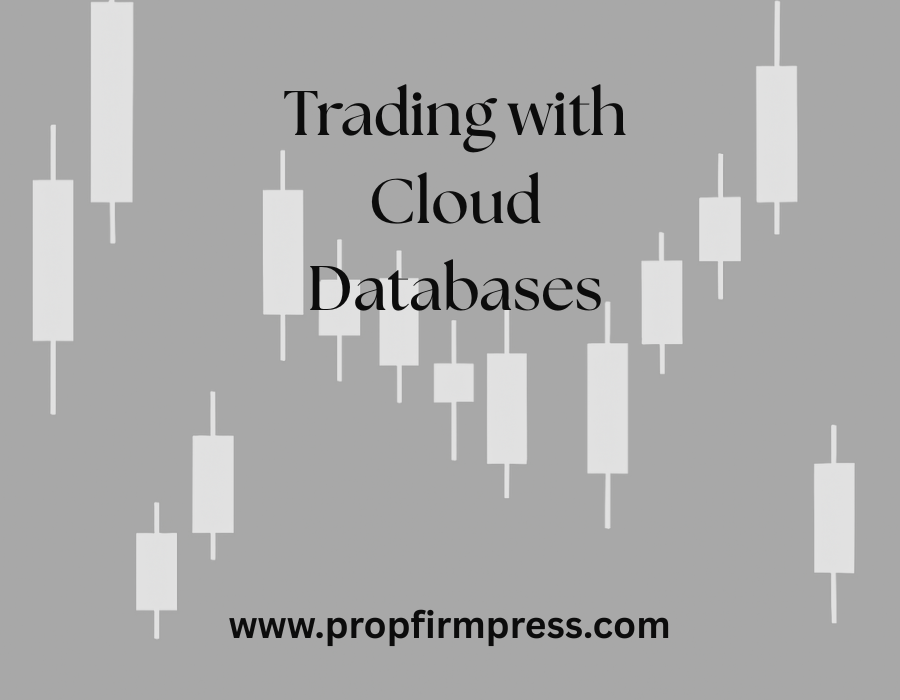Trading with Cloud Databases
In the fast-paced world of financial trading, data management plays a pivotal role in driving successful strategies. As markets evolve with increasing complexity and velocity, traditional on-premises databases often struggle to keep up with the scale and speed required by modern trading platforms. This has led to a growing adoption of cloud databases, which provide the flexibility, scalability, and performance necessary for handling vast streams of trading data in real time.
Cloud databases harness the power of cloud computing to offer traders and financial institutions a robust infrastructure capable of managing massive volumes of transactional and historical market data. These systems not only streamline data access but also enhance decision-making by allowing quick retrieval, storage, and analysis without the limitations imposed by physical hardware or geographic constraints.
Advantages of Using Cloud Databases in Trading
One of the primary benefits of cloud databases in trading is their unparalleled scalability. Markets can experience sudden surges in data volume due to high-frequency trading, news events, or economic releases. Cloud databases can effortlessly scale up to meet these peaks, ensuring no delay or data loss occurs during critical moments. Conversely, they can scale down during quieter periods, optimizing costs.
Reliability and uptime are crucial for trading platforms that operate around the clock. Leading cloud providers employ multiple data centers across various regions, ensuring that data remains available and redundant. This geographic distribution also minimizes latency, enabling trades to be executed swiftly, which is essential in markets where milliseconds can determine profit or loss.
Cost-effectiveness is another significant advantage. By eliminating the need for costly on-premises infrastructure and maintenance, traders and institutions can focus their budgets on analytics, strategy development, and expanding their operations. Pay-as-you-go pricing models allow for better financial planning and reduce waste.
Real-Time Data Processing and Analytics
In trading, speed is synonymous with opportunity. Cloud databases support real-time data ingestion and processing, allowing traders to receive the latest market information instantly. This capability is vital for algorithmic trading, where decisions are automated and executed within fractions of a second based on live data feeds.
Modern cloud database platforms integrate seamlessly with analytics tools, machine learning models, and artificial intelligence systems to enable predictive analysis. Traders can leverage these insights to uncover hidden patterns, anticipate market movements, and refine strategies to improve profitability.
Moreover, the elasticity of cloud resources ensures that analytical workloads, which may vary significantly throughout the trading day, can be handled efficiently without performance degradation. Complex queries, backtesting simulations, and risk assessments become more accessible and faster to execute.
Security Considerations in Cloud Trading Databases
While the cloud offers numerous benefits, security remains a paramount concern, especially when handling sensitive financial data. Leading cloud database providers invest heavily in state-of-the-art security measures to protect against breaches, unauthorized access, and data loss.
Encryption both at rest and in transit ensures that data remains confidential. Multi-factor authentication and role-based access controls restrict database access to authorized personnel only. Additionally, continuous monitoring and auditing detect suspicious activities early, helping prevent potential security incidents.
Regulatory compliance is another critical factor. Many cloud database vendors adhere to strict financial industry standards such as PCI DSS, SOC 2, and GDPR, offering traders assurance that their data management practices meet legal and ethical requirements.
Integration with Trading Platforms and APIs
Effective trading depends not only on data storage but also on the ease with which systems can communicate with one another. Cloud databases are designed with integration at their core, offering rich APIs, SDKs, and connector tools that facilitate smooth interaction with various trading platforms, brokers, and third-party services.
This interoperability allows traders to build customized ecosystems that unify market data feeds, order management systems, and execution engines into a cohesive workflow. The flexibility of cloud databases supports multiple formats and protocols, which accommodate the diverse data needs inherent in trading activities.
Automated workflows enabled through APIs also help in real-time order execution, risk checks, and portfolio rebalancing, making trading more efficient and less prone to manual errors.
Choosing the Right Cloud Database for Trading
Selecting an appropriate cloud database platform requires consideration of several factors tailored to the needs of the trading environment. Performance metrics such as read/write speeds, query latency, and concurrency limits must align with the demands of real-time trading operations.
Scalability options and geographic data center locations influence how well the system can handle fluctuating workloads and latency requirements. For global traders, the ability to replicate data across multiple regions can be crucial for disaster recovery and speed.
Compatibility with existing tools and programming languages is another critical consideration, as it affects integration effort and operational continuity. Evaluating vendor support, uptime guarantees, and pricing models also helps in making an informed choice that balances performance with budgetary constraints.
Future Trends in Cloud Databases for Trading
The evolution of cloud databases continues to accelerate, driven by advancements in technology and increasing demands from the financial markets. Emerging trends include the adoption of serverless databases, which abstract infrastructure management entirely, allowing even faster deployments and scale with minimal overhead.
Edge computing is another development enhancing trading systems by placing data processing closer to the source of market data, reducing latency even further. This can be pivotal for high-frequency trading where microseconds matter.
Artificial intelligence and machine learning integration with cloud databases is also becoming more prevalent, providing traders with smarter, automated decision-making tools that adapt dynamically to changing market conditions.
As these technologies mature, they will empower traders with unprecedented capabilities, making cloud databases not just a data repository but a strategic asset in financial trading operations.
Ready to sharpen your strategy? Gain instant access to Scalping VIP today.
